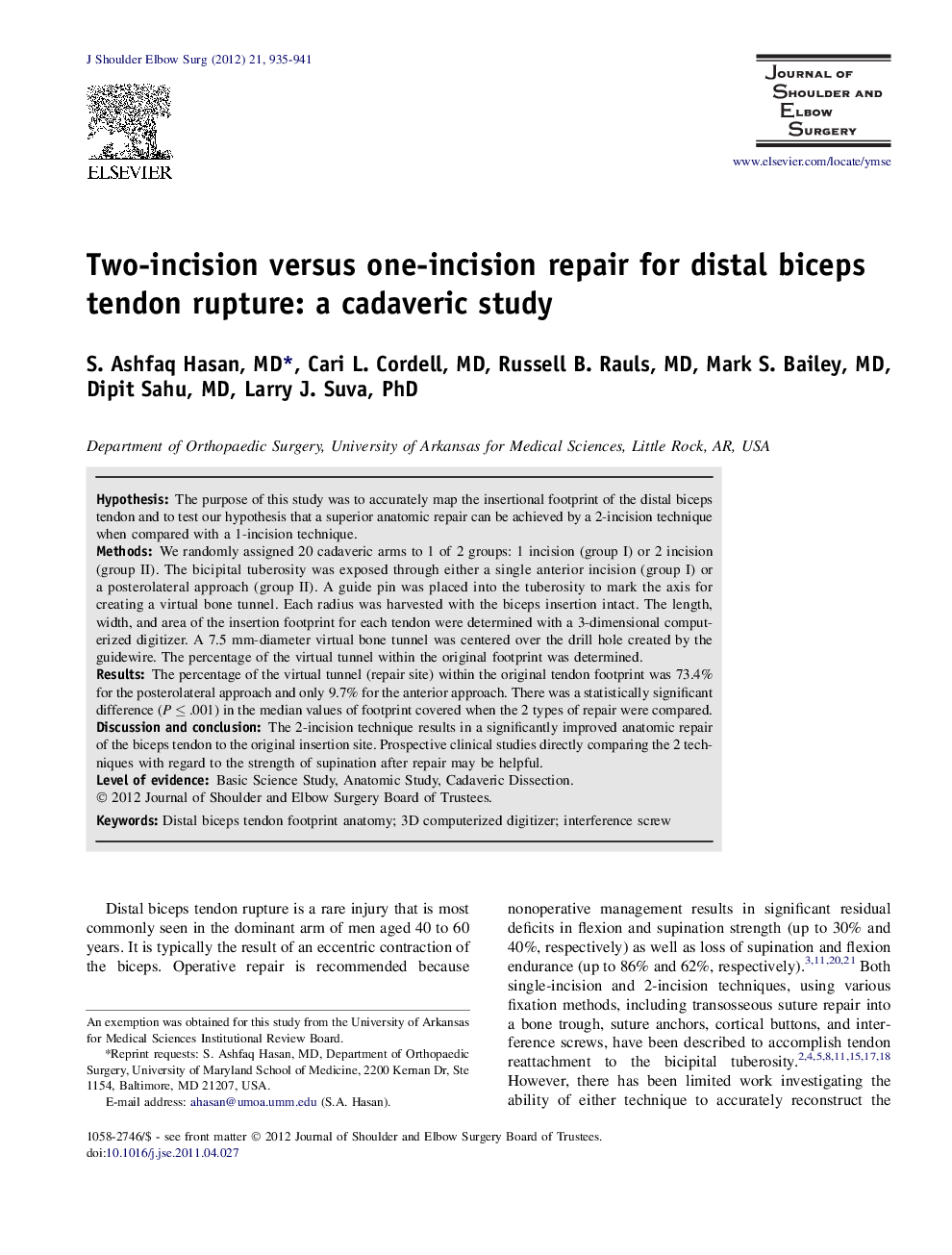| Article ID | Journal | Published Year | Pages | File Type |
|---|---|---|---|---|
| 4074300 | Journal of Shoulder and Elbow Surgery | 2012 | 7 Pages |
HypothesisThe purpose of this study was to accurately map the insertional footprint of the distal biceps tendon and to test our hypothesis that a superior anatomic repair can be achieved by a 2-incision technique when compared with a 1-incision technique.MethodsWe randomly assigned 20 cadaveric arms to 1 of 2 groups: 1 incision (group I) or 2 incision (group II). The bicipital tuberosity was exposed through either a single anterior incision (group I) or a posterolateral approach (group II). A guide pin was placed into the tuberosity to mark the axis for creating a virtual bone tunnel. Each radius was harvested with the biceps insertion intact. The length, width, and area of the insertion footprint for each tendon were determined with a 3-dimensional computerized digitizer. A 7.5 mm-diameter virtual bone tunnel was centered over the drill hole created by the guidewire. The percentage of the virtual tunnel within the original footprint was determined.ResultsThe percentage of the virtual tunnel (repair site) within the original tendon footprint was 73.4% for the posterolateral approach and only 9.7% for the anterior approach. There was a statistically significant difference (P ≤ .001) in the median values of footprint covered when the 2 types of repair were compared.Discussion and conclusionThe 2-incision technique results in a significantly improved anatomic repair of the biceps tendon to the original insertion site. Prospective clinical studies directly comparing the 2 techniques with regard to the strength of supination after repair may be helpful.
